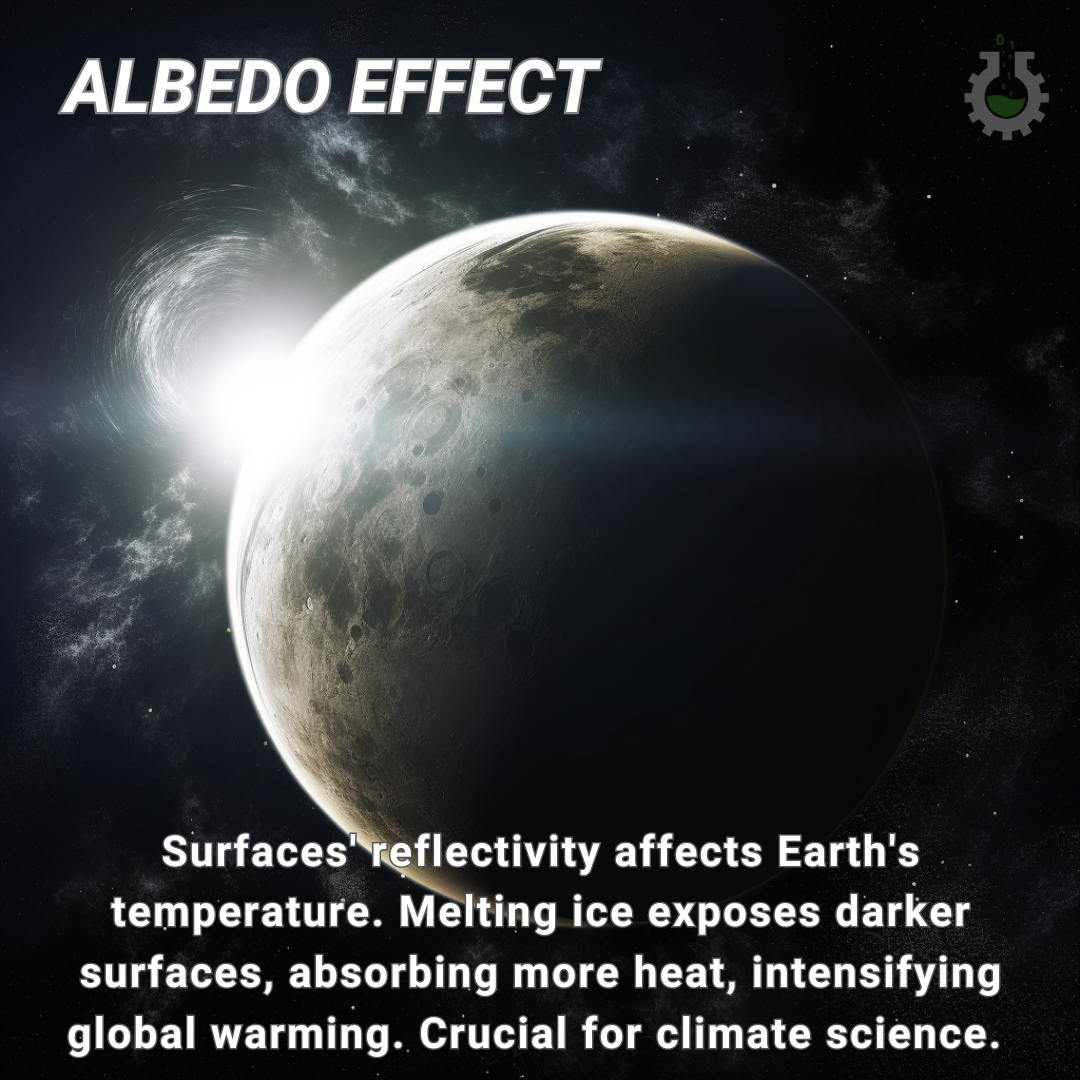January 22, 2024
Climate Change Poster Collection of the Day – Albedo Effect
Book a Demo
Today’s Climate Change Poster Collection highlights Albedo effect. Albedo is a fascinating scientific concept. Simply put, it measures the amount of reflected sunlight from a surface. It is represented as a percentage or decimal between 0 and 1. A value of 0 indicates complete absorption, meaning a surface absorbs all sunlight and reflects none. On the other end of the spectrum, a value of 1 signifies perfect reflection, where a surface reflects all sunlight and absorbs none.
Several factors influence the albedo of different Earth surfaces such as soil and vegetation. These include soil moisture, the type of vegetation, and levels of urbanization. For instance, a parched, barren piece of land is likely to have a higher albedo than a lush, green forest. Similarly, urban areas with their concrete and glass buildings typically have a higher albedo than rural areas.
It’s important to note that Earth’s albedo isn’t static. Changes in Earth’s albedo occur due to variations in cloud cover and surface cover. For instance, a sudden increase in cloud cover could raise the planet’s albedo as the white, fluffy clouds reflect more sunlight back into space.
The concept of albedo is also significant in designing energy-efficient buildings. Architects and engineers consider albedo when deciding the color coating of walls and ceilings. A high albedo color, such as white, can help reflect more sunlight and keep the building cooler, reducing the need for air conditioning and contributing to energy efficiency.
Earth’s overall albedo is around 0.30. This figure significantly influences the planet’s equilibrium temperature, as it affects the energy balance from the sun. The higher the albedo, the more light and heat are reflected back into space, and the cooler the planet remains.
However, Earth’s albedo has been decreasing due to global warming and the melting of ice, especially in the polar regions. This decrease results in more energy absorption and increased temperatures, creating a vicious cycle of warming. The reduction in ice coverage, in particular, contributes to climate change by allowing more energy absorption. This is because ice, with its high albedo, reflects more sunlight back into space than open water or land.
Understanding the concept of albedo is crucial in mitigating the impacts of climate change and global warming. By influencing the amount of sunlight a surface reflects or absorbs, albedo plays a significant role in Earth’s energy balance and, consequently, its climate. As such, studying and monitoring Earth’s albedo can provide valuable insights into the planet’s climate system and help guide efforts to slow down global warming.
Discover an inspiring collection of climate change poster.



